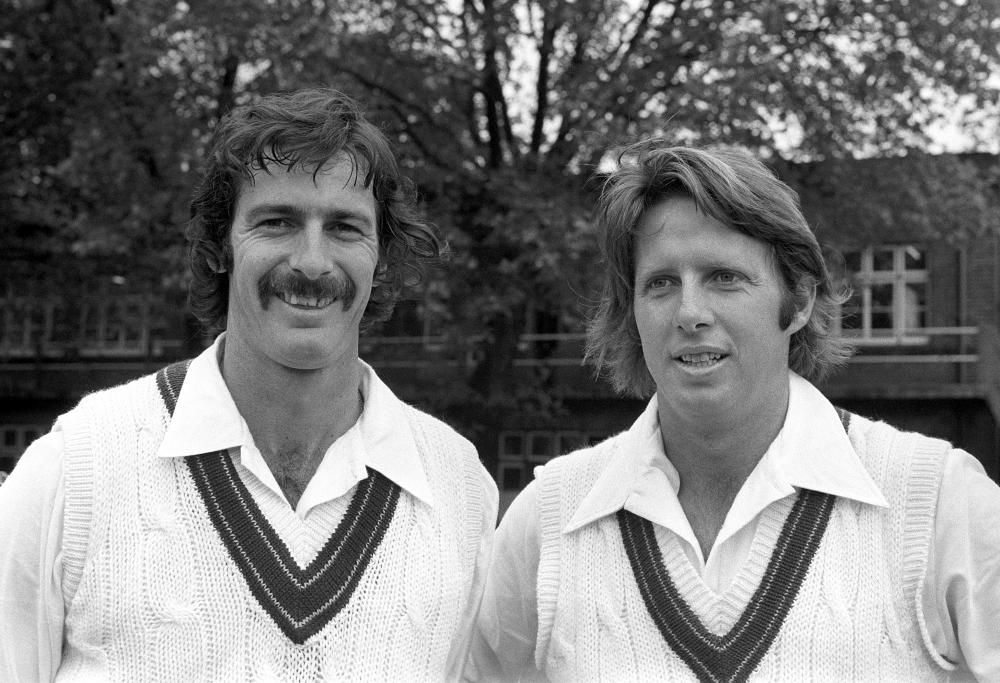Roar Guru

“I’m not trying to cause a big sensation, I’m just talkin’ ’bout my g-generation.”
As another Australian summer ends, you know what comes next to fill the off-season void – a series of articles listing teams that have been selected using criteria as random as possible.
I’ll kick things off with a trio of sides representing what demographers like to term the ‘Baby Boomer,’ ‘Generation X’ and ‘Millennial’ eras, that collectively include anyone born between 1946 and 1995.
Any Roarer who was born during one of those three periods will no doubt have their own view on which of the sides is the strongest, and whether their members’ personalities and playing styles reflected the societies in which they grew up.
The ‘Baby Boomers’ XI
Mark Taylor (c, born 1964), Geoff Marsh (1958), David Boon (1960), Greg Chappell (1948), Allan Border (1955), Kim Hughes (1954), Ian Healy (1964), Bruce Yardley (1947), Merv Hughes (1961), Dennis Lillee (1949), Jeff Thomson (1950).
Honourable mentions: Rick McCosker (born 1946), Graeme Wood (1956), John Dyson (1954), Graham Yallop (1952), Dean Jones (1961), Greg Ritchie (1960), Paul Sheahan (1946), Greg Matthews (1959), Wayne Phillips (1958), Rod Marsh (1947), Geoff Lawson (1957), Max Walker (1948), Bruce Reid (1963), Terry Alderman (1956), Rodney Hogg (1951), Ray Bright (1954).
Ninety-three ‘Baby Boomers’ played Test cricket for Australia, and each of the 27 listed above played 25 or more games. The group would form the core of Australia’s dominant sides of the mid-1970s. The relatively high number of players selected during their era was an outcome of defections to World Series Cricket and, later, rebel tours to South Africa.
The first of them to earn a Test cap was Paul Sheahan, in 1967 at the age of 21. Within six years he had been joined by Rod Marsh, Greg Chappell, Dennis Lillee and Jeff Thomson. And the very last Baby Boomer was the evergreen Colin Miller in 1998, who then played until 2001 and the age of 37.
It’s sobering to think that every single Boomer is now aged over 60, and most of my childhood heroes are now aged in their late-70s. The era’s children grew up with the Korean War, the Vietnam War and the Cold War. The period was also marked by increasing affluence and expectations, high levels of welfare, low unemployment, and rapid technological advances.

Dennis Lillee, left, and Jeff Thomson. (PA Images via Getty Images)
The ‘Generation X’ XI
Matthew Hayden (born 1971), Michael Slater (1970), Ricky Ponting (1974), Mark Waugh (1965), Steve Waugh (c, 1965), Mike Hussey (1975), Adam Gilchrist (1971), Shane Warne (1969), Craig McDermott (1965), Jason Gillespie (1975), Glenn McGrath (1970).
Honourable mentions: Justin Langer (born 1970), Simon Katich (1975), Chris Rogers (1977), Greg Blewett (1971), Damien Martyn (1971), Darren Lehmann (1970), Andrew Symonds (1975), Brad Haddin (1977), Brett Lee (1976), Ryan Harris (1979), Paul Reiffel (1966), Michael Kasprowicz (1972), Stuart MacGill (1971).
Fifty-one ‘Generation X-ers’ played Test cricket for Australia, and each of the 24 listed above played 25 or more games. They benefitted from the Australian Cricket Academy’s establishment in Adelaide in 1987, and the introduction of full-time playing contracts for all state-level players in 1997. They would form the core of a resurgent Australian side in the late-1980s and early-‘90s.
The first of them to earn a Test cap was Craig McDermott, in 1984 at the age of 19. Within seven years he had been joined by Steve Waugh, Mark Waugh and Shane Warne. And the very last Gen-Xer to take the field was the late-blooming Adam Voges, who played until 2016 and the age of 37.
The era’s children were sometimes termed the ‘latchkey’ or ‘MTV’ generation, and subsequently stereotyped as ‘resourceful’ and ‘independent.’ Their mothers had returned to work in increasing numbers, and divorce rates had risen. And the number of Australians with university degrees more than doubled, to 24.8 per cent.
The ‘Millennials’ XI
David Warner (born 1986), Usman Khawaja (1986), Marnus Labuschagne (1994), Steve Smith (1989), Michael Clarke (c, 1981), Shane Watson (1981), Alex Carey (1991), Mitchell Johnson (1981), Pat Cummins (1993), Nathan Lyon (1987), Josh Hazlewood (1991).

Pat Cummins celebrates dismissing Rohit Sharma. (Photo by Chris Hyde/Getty Images)
Honourable mentions: Phil Hughes (born 1988), Travis Head (1993), Shaun Marsh (1983), Mitchell Marsh (1991), Tim Paine (1984), Matthew Wade (1987), Mitchell Starc (1990), Peter Siddle (1984), Ben Hilfenhaus (1983).
To date, 63 ‘Millennials’ have played Test cricket for Australia, and each of the 20 listed above has played 25 or more games. As the youngest Millennials are yet to turn 30, those numbers may well increase during the next 5-10 years.
The first of them to earn a Test cap was Michael Clarke, in 2004 at the age of 23. As the Australian side was rebuilt following the Ashes series of 2006-07, he was joined by the likes of Shane Watson, Mitchell Johnson and Peter Siddle. Josh Inglis is the latest one to earn a Baggy Green, and he won’t be the last.
Children in what has also been termed the ‘Generation Y’ era experienced growing use of the internet and social media, and the number of university-educated Australians almost doubled yet again, to more than 40 per cent.
‘Generation Z’
Nine ‘Gen Z-ers’ have played Test cricket for Australia to date, beginning with Matthew Renshaw who debuted in 2016 at age 20, and is now 29. During the past nine years he has been followed by Jyhe Richardson, Cameron Green, Will Pucovski, Todd Murphy, Matthew Kuhnemann, Nathan McSweeney and Sam Konstas, and most recently Cooper Connolly.
That group, with the unfortunate exception of Pucovski, should form the core of Australia’s sides for the next decade.
They and their peers will soon be supplemented by members of ‘Generation Alpha,’ or those born between 2010 and 2024, of whom the oldest are now aged 15. No doubt Cricket Australia has already identified some of them as ‘PONIs,’ or ‘Players Of National Interest.’